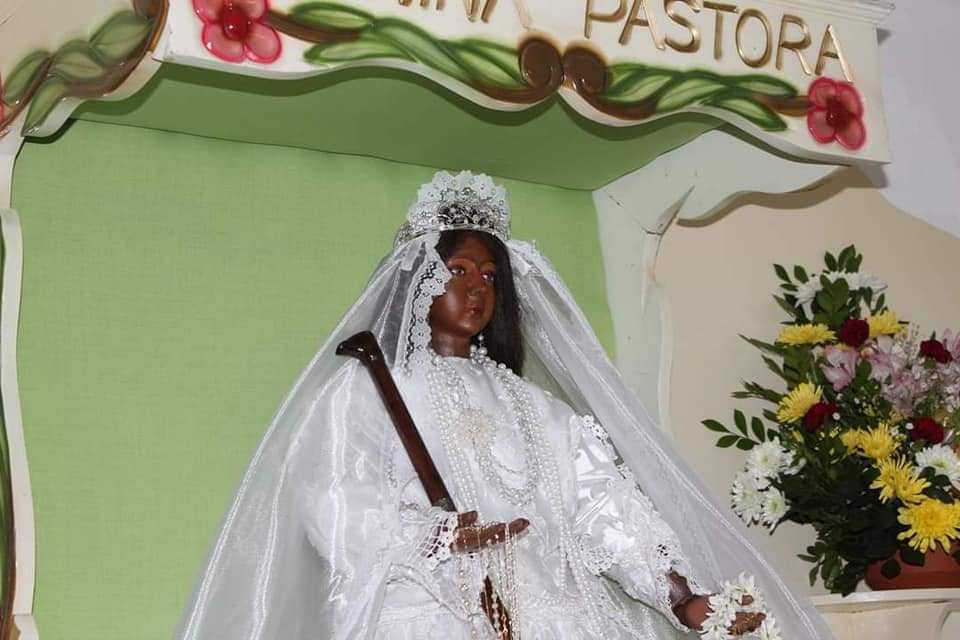|
Siparia and La Divina Pastora are synonymous and the very identity of the little country town is associated with the presence of its patron saint. There are many myths and legends surrounding the origins of the statue which has such deep spiritual and temporal significance for so many. Since time immemorial, the plateau of Siparia had been home to a large community of Warao native peoples from the Orinoco Delta region of Venezuela. Their primary landing place was Quinam beach from whence a narrow footpath led to the settlement and other parts of the island.
In 1758, a party of Capuchin monks from Spain, founded a Mission here, complete with a small ajoupa to serve as a chapel. One of the major monumental events of this period is that in 1795, Pope Pius VI decreed La Divina Pastora ( The Divine Shepherdess) to be that patron saint of all Capuchin missions. There is no mention of the statue of La Divina Pastora from this period of the Mission. One unsupported claim is that it was brought to the chapel circa 1800 by a dying priest from the Cumana Mission in Venezuela who claimed it saved his life. A popular story concerning the statue was recounted in 1887 as follows: “Tradition says that this statue was picked up by Spaniards in the depths of the forest ; it remained here for some time, and was then removed to Oropouche Church. It made no stay there, however, for on the morning after its arrival it was found to have mysteriously disappeared during the night, and, on search being instituted, it was discovered in the precise spot of the forest where it had first appeared.” Fr. Poirier, the Padre in the 1840s, does not write of the statue’s existence, but by 1878, the feast of La Divina Pastora was already being celebrated two Sundays after Easter. The image of the Divine Shepherdess resided in the little tapia church , resting on a mound of earth where homage was paid. Waraos from the Orinoco, local Catholics and a new element, Hindus, made the feast day boisterous and lively. Pilgrims would encamp and stream into the chapel to make offerings to La Divina . In 1878, Fr. Armand Masse, a French priest , wrote this observation: “Some Waraoons dressed in nothing are at the door of the church. A band of coolies arrives. They sing all night long. At dawn they go to bathe and then come to the chapel .They have brought two cocks which they will offer to the virgin ( they call her Siparee Mai) . To make this offering they go to the foot of the altar with the cock and saying their prayers in a loud voice with arms extended , they go to the back of the church , untie the cock and set it free in the church . “ La Divina Pastora after an extensive restoration undertaken in 2010-2011 by conservation specialist, Judi Sheppard. (Source: Virtual Museum of TT, March 2022)
0 Comments
Leave a Reply. |
T&T news blogThe intent of this blog is to bring some news from home and other fun items. If you enjoy what you read, please leave us a comment.. Archives
May 2025
Categories
All
|


 RSS Feed
RSS Feed